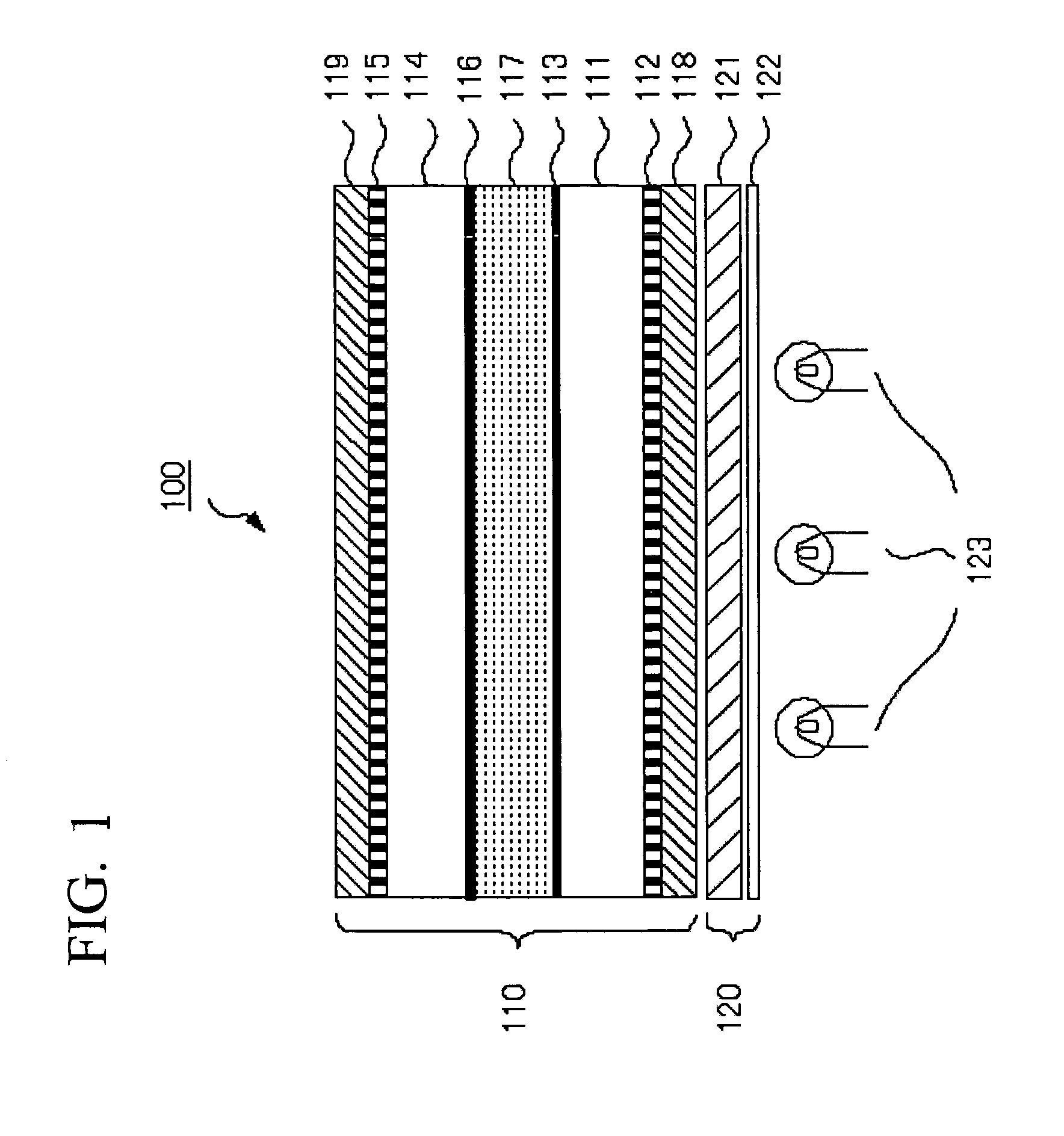Liquid crystal display cell, display cell, glass substrate for display device and manufacturing method for liquid crystal display cell
a technology of liquid crystal display and glass substrate, which is applied in the direction of thin material processing, instruments, chemistry apparatus and processes, etc., can solve the problems of reduced glass substrate strength, difficult handling, and deformation of thin glass substrate, so as to reduce the physical strength of glass substrate, simplify manufacturing steps, and reduce the weight of display cells
- Summary
- Abstract
- Description
- Claims
- Application Information
AI Technical Summary
Benefits of technology
Problems solved by technology
Method used
Image
Examples
first embodiment
[0028]FIG. 1 is a diagram of a liquid crystal display cell according to an embodidment of the invention. A liquid crystal display device 100 shown in FIG. 1 includes: a liquid crystal display cell 110 including a lamination of a lower polarizer 118, a first glass substrate 111 having a metal oxide glass film 112 formed on the side of the lower polarizer 118, a liquid crystal layer 117, a second glass substrate 114 having a metal oxide glass film 115 formed on the side opposite the liquid crystal layer 117, and an upper polarizer 119; and a backlight unit 120 including a light guide plate 121, a diffusion plate 122, and light sources 123. The liquid crystal layer 117 is configured so that peripheral portions of the first glass substrate 111 and second glass substrate 114 are sealed with a sealant (not shown) and the layer includes a liquid crystal filled in a space formed by a prescribed gap. Though not shown, a plurality of optical compensation films designed to enhance scattering o...
second embodiment
[0042]A second embodiment is applied to a liquid crystal display cell 110 of the liquid crystal display device 100. Instead of the metal oxide glass film 112 and the metal oxide glass film 115, coating layers made of transparent polymer with a refractive index equivalent to the refractive index of the first glass substrate 111 or the second glass substrate 114 can be provided on the outer surfaces of the first glass substrate 111 and the second glass substrate 114. This arrangement can also restore the light transmittance of the first glass substrate 111 or the second glass substrate 114. “Transparent polymer” refers to polymer having a light transmittance of typically not less than 70%, and preferably not less than 90%.
[0043]A thickness of the coating layer made of the transparent polymer and coated on the outer surface of the first glass substrate 111 or the second glass substrate 114 is optionally selected depending on the magnitude of the surface roughness (Ra) of the outer surf...
PUM
| Property | Measurement | Unit |
|---|---|---|
| surface roughness | aaaaa | aaaaa |
| refractive index | aaaaa | aaaaa |
| surface roughness | aaaaa | aaaaa |
Abstract
Description
Claims
Application Information
 Login to View More
Login to View More - R&D
- Intellectual Property
- Life Sciences
- Materials
- Tech Scout
- Unparalleled Data Quality
- Higher Quality Content
- 60% Fewer Hallucinations
Browse by: Latest US Patents, China's latest patents, Technical Efficacy Thesaurus, Application Domain, Technology Topic, Popular Technical Reports.
© 2025 PatSnap. All rights reserved.Legal|Privacy policy|Modern Slavery Act Transparency Statement|Sitemap|About US| Contact US: help@patsnap.com



